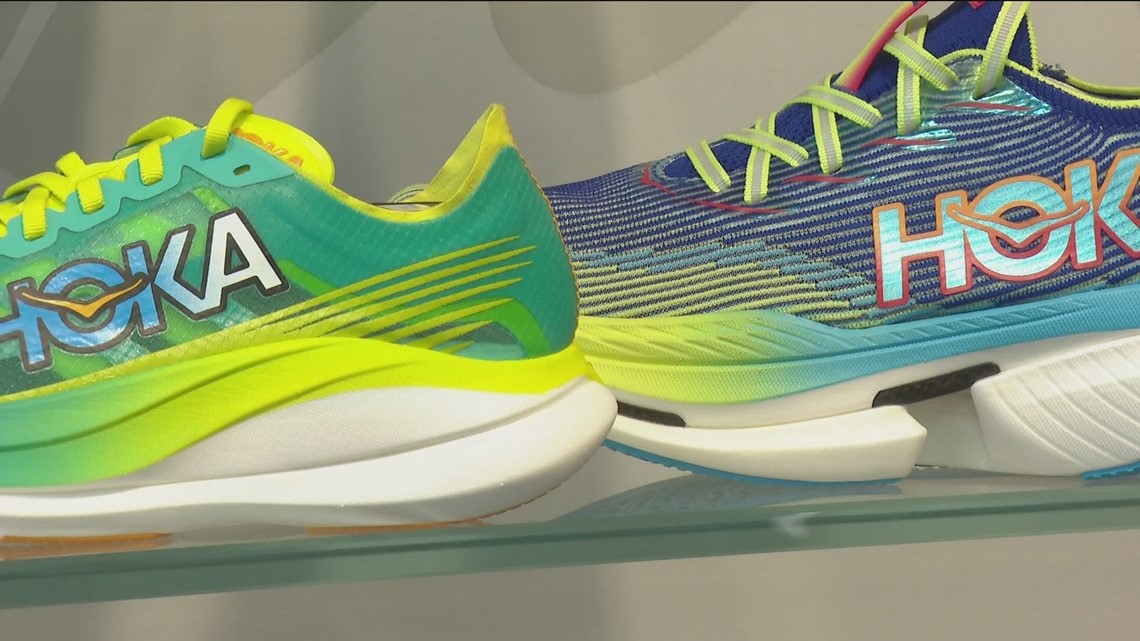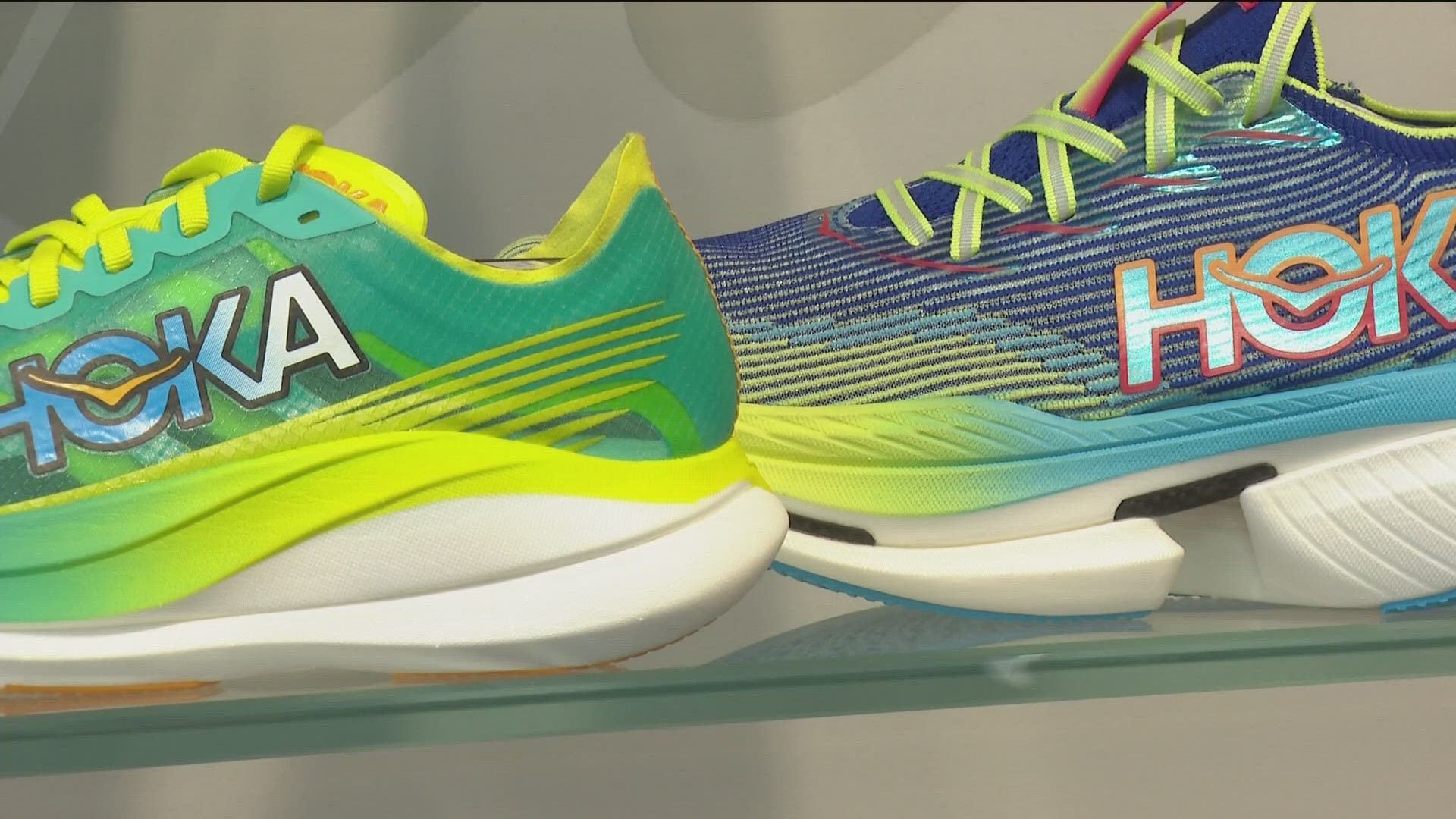SAN DIEGO — Running has been around as long as there’s been something that could chase humans, but racing isn’t quite as old.
The first documented race was about 1000 years ago. But over the last decade, there’s been a technological revolution in running, one powered by shoe technology that can give runners a leg up, if they can pay up.
Technology
Ultralight carbon plate running shoes were introduced to the masses by Nike in 2017 with the Vaporfly.
The shoes use bouncy, ultralight materials sandwiching a carbon plate that’s angled forward. When you put them on, you feel like they’re launching you with every step.
Kevin Lachenmyer, owner of the Fleet Feet store in Carmel Valley, says runners who want to have an edge are into the new technology.


'Cheat code'
“These are, you know, little cheat codes in terms of adding extra efficiency," Lachenmyer said.
Michael Luu is one of those runners.
Luu trains with the San Diego Track Club on Tuesday evenings at the Aztrack at San Diego State University and calls himself a hobby runner who does it to stay in shape.
Luu says the shoes have made a difference for him, proven by a faster half-marathon time.
“I think I improved by about five minutes… the shoe was just.. it was just like nothing I ever ran before," he said. Luu also credits the shoes with faster recovery, saying he feels better the day after a long run in his carbon plate shoes than in more traditional running shoes.
Cost
Some have questioned whether the shoes are good for the sport, whether they have too much of an impact, but running guru Paul Greer, who coaches the San Diego Track Club, doesn’t think there’s anything wrong with the technology.
Greer, who is also coach of the USA Track and Field Under 20 Men’s Cross Country Team, believes that the sport’s governing bodies have a good handle on the technology and are monitoring it appropriately, keeping the playing field level.
Nearly every major running shoe manufacturer sells a carbon plate shoe, including different tiers of shoe.
Lachenmyer said the most expensive shoes are $275 and up and that many runners in San Diego are willing to pay that price.
”For your hobbyist runners, if they want that little bit of extra bit of a cheat code to be able to kind of feel fastest and most confident on their race days, you know, if it's worth spending, you know, a couple hundred bucks on something that's a little bit more race specific, they’re all for it," Lachenmyer said.
The cost, when it comes to expensive shoes, needs to make sense for Coach Greer. His only problem with the so-called super shoes is that for some younger competitive runners, battling for a run scholarship, the price may be prohibitive.
That could mean some runners who could pay the high price to get a lower time would have an advantage over those who can’t.
"And that is a big deal, because that pays the future of that athlete based on the shoes. And it's only simply because they can't afford the shoes... now at a level where they're too expensive," Greer said.
WATCH RELATED: Marine veteran runs his 455th marathon | Zevely Zone

